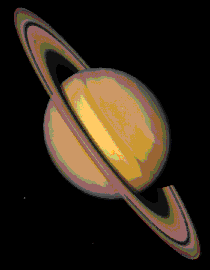This is an image of Saturn.
Click on image for full size
NASA/JPL
A Look at the History of Saturn's Atmosphere
The giant planets have definitely changed since their
formation. But how much remains to be seen.
Most of the original air of the giant planets remains in place. (The earth-like planets lost most of their atmospheres very soon after they formed because the atmosphere drifted away).
Saturn is made primarily of the simple molecules hydrogen and helium, which is what there was near Saturn when it was forming.
You might also be interested in:
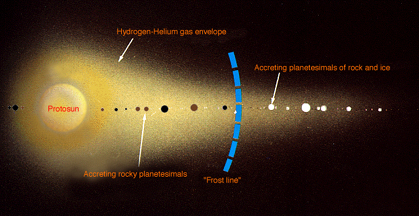
The position of the planets in the solar nebula affected how big they became and what they were made of. The blue line in the picture shows where it became so cold that ice began to form. Planets that
...more
The clouds of Saturn are much less colorful than those of Jupiter. This is because Saturn's atmosphere is made of more sulfur. Sulfur makes Saturn look yellow. The atmosphere of Saturn, like Jupiter, is
...more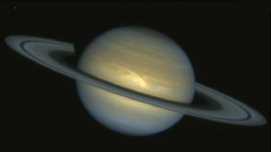
The most important motions in the atmosphere are winds. The major winds in Saturn's atmosphere are the zonal winds which are made of zones and belts. Zones and belts blow in opposite directions around
...more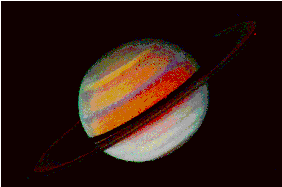
The clouds on Saturn, like Jupiter, are divided into stripes called "belts and zones". In a belt, very powerful winds blow one way. In a zone, very powerful winds blow the other way. These kinds of winds
...more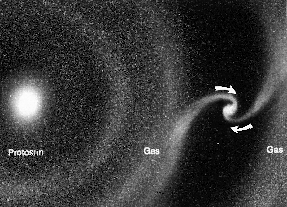
As shown in this picture, while they were forming in the solar nebula, the core of the planets-to-be drew material to themselves from the cloud of gas and dust around them. The bigger planets-to-be were
...more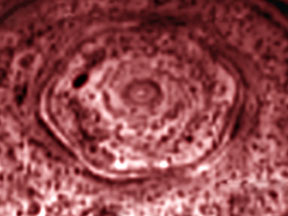
Astronomers have discovered a strange shape in Saturn's atmosphere. The shape is a hexagon. The hexagon is near Saturn's North Pole. Scientists aren't quite sure why Saturn has the hexagon shape in its
...more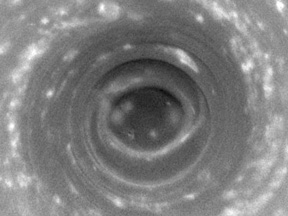
If you wanted to go someplace warm for a vacation, would you choose the South Pole? If you lived on Saturn you might! Saturn's South Pole is the warmest place on the ringed planet. Watch out for the weather,
...more


